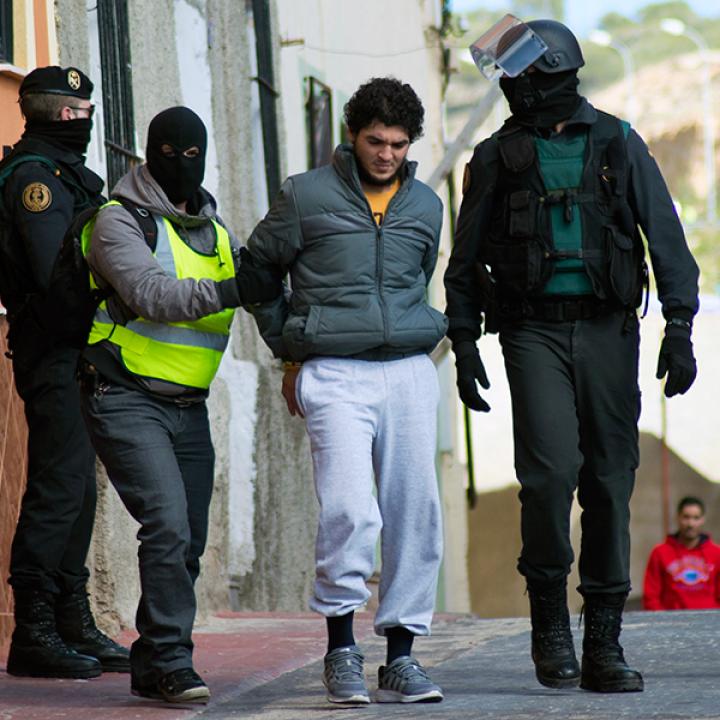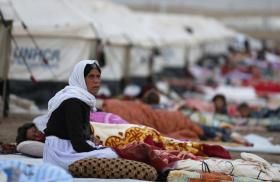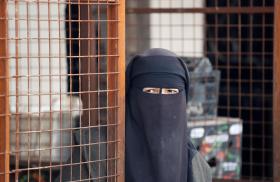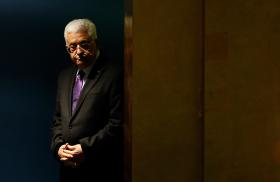
- Policy Analysis
- PolicyWatch 2793
After the Jihad: The U.S. Response to Foreign Terrorist Fighters

Part of a series: Counterterrorism Lecture Series
or see Part 1: U.S. Efforts against Terrorism Financing: A View from the Private Sector
A former counterterrorism official outlines what governments are doing to address the threat of militants returning home from Syria and Iraq.
On April 24, Jacob Walles addressed a Policy Forum at The Washington Institute as part of the Stein Counterterrorism Lecture Series. Walles is a former senior advisor on foreign fighters with the State Department's Bureau of Counterterrorism and Countering Violent Extremism. The following is a rapporteur's summary of his remarks.
When the United States first began to focus on the foreign terrorist fighter problem in 2012, before the Islamic State fully emerged, its objective was to prevent individuals from joining the battles in Iraq and Syria. Now that the flow of fighters to these conflict zones has sharply decreased, Washington and its allies have pivoted to dealing with fighters who have returned, or will return, to their home countries. In Tunisia -- which has the dubious distinction of being the top exporter of fighters to Iraq and Syria -- security forces are struggling to monitor the high number of returnees. And in the European Union, the freedom of travel in the Schengen Area makes the entire continent vulnerable.
Some of the emphasis on foreign fighters is misleading; most of the recent attacks in Europe have been committed by homegrown extremists, as have all of the Islamic State-related attacks in the United States. Nevertheless, attacks by trained, battle-hardened returnees tend to be more deadly; the mass-casualty attacks in Paris in 2015 and Brussels in 2016 proved this point. Fortunately, most of the tools for dealing with returnees are the same as those used to manage homegrown violent extremism, such as intelligence sharing and deradicalization programs. The United States does not have much expertise in countering homegrown terrorism, so it has instead tried to forge connections between its allies and share lessons learned.
U.S. efforts on the foreign fighter problem fall into two broad categories: multilateral and bilateral programs. Multilateral efforts take place most notably within the Global Coalition to Counter the Islamic State in Iraq and Syria, but also within the Global Counterterrorism Forum, a separate group that predates the coalition. The Global Coalition mainly consists of willing U.S. allies from the Middle East, Europe, and elsewhere, while the GCTF has a broader membership and a slightly different focus. Both organizations are addressing the foreign fighter problem with multilateral working groups, which remain the best means of raising awareness and sharing best practices. Most of the coalition's contributions are limited to the battlefield, where militaries can target terrorist leaders and facilitators. In contrast, the challenge of returnees is best undertaken by civilian agencies within a bilateral framework, which offers the space needed to share intelligence, improve border security, and prevent radicalization on the front end.
The guiding principles for countering foreign fighters are enshrined in UN Security Council Resolution 2178, which requires member states to take action in four broad areas: establishing effective border patrols, exchanging operational information, cooperating to prevent radicalization and recruitment, and adopting domestic laws that criminalize jihadist travel, recruitment, and financing. The 2015 Paris attack shifted the U.S. focus to Europe, based on the concern that returning fighters with European passports would be able to travel to the United States without visas. The San Bernardino attack that same year further stoked the atmosphere of fear in America, and Congress soon tightened European visa waiver requirements.
In retrospect, U.S. concerns may have been overwrought. At the time, however, the threat level in the EU was high, and the United States had a significant, direct interest in European security. As U.S. authorities began to reach out to allies after the Paris attack, they quickly identified the vulnerabilities of the Schengen system and the deficiencies of intra-European information exchange. In response, the State Department developed the Foreign Fighter Surge Team initiative and helped the EU establish its Roadmap on Interoperability.
The FFST initiative was part of a program of interagency cooperation between the United States and six EU countries: Belgium, France, Germany, Italy, Greece, and Sweden. These efforts began with interagency meetings to identify areas for technical coordination, followed by the creation of individual cooperative programs. The activities undertaken within these programs included countering terrorist financing, improving detection of fraudulent passports, and reaching agreements on information sharing and evidence exchange. Each program was tailored to the needs of the individual country and reflected Washington's valuable technical expertise on key issues. The FFST initiative was later expanded to include the Balkans in a separate but similar program, the Bilateral Engagement Teams; U.S. authorities were able to use foreign assistance money for some of these programs given their stronger development focus.
The other main area of cooperation was the European Roadmap on Interoperability, an initiative undertaken by the Dutch during their EU presidency in 2016. The EU has a complex system of terrorist watchlists -- one for border checks, one for law enforcement, and one for asylum applications. In most cases there is no communication between these databases, and European laws have sometimes prevented information sharing. This bureaucratic situation is similar to that of the American intelligence community before 9/11, but the European problem is multiplied by twenty-eight layers of complications for each of the twenty-eight member states. The roadmap began with the issue of interoperability but soon expanded to address the legal and regulatory regimes that tightly control data privacy in Europe. The United States worked closely with the Dutch to support the roadmap's development and approval, and the EU Council formally authorized it in 2016. American technical experts have since been helping the EU implement the various decisions that flowed from that authorization, building a system that will take years to fully realize. Overall, U.S.-EU collaborations have been highly effective, and bilateral counterterrorism relationships have greatly improved since the Paris attack, especially with France.
U.S. efforts also extended beyond Europe to include North Africa, Southeast Asia, and the Middle East. Yet relationships in these regions were characterized more by assistance than technical cooperation. Much of Washington's work there involved prompting partners to implement counterterrorism laws that were already in place, and its level of success in this regard varied.
In Turkey, cooperation on foreign fighters initially improved but then plateaued, subsumed within other conversations about terrorism in Syria. The United States and Turkey have different concerns in that regard, with the Turks viewing Kurdish groups as the biggest threat. This friction affected what could be done on the foreign fighter issue. The United States tried to develop structured interagency cooperation with Turkey, but its efforts were blown apart by last year's attempted coup. Similarly, joint European-Turkish efforts on foreign fighters and returnees have been haphazard; in cases where the Turks have poor relations with a given country (e.g., the Netherlands), cooperation on these issues has been affected. On the positive side, Ankara tightened the porous border with Syria following a string of Islamic State attacks inside Turkey. As a result, it is much more difficult to cross into Syria today than in the past.
Two underlying questions typically come up regarding foreign fighters: why are there so many of them (particularly from Tunisia), and what is their motivation? Addressing these questions requires a global effort to deal with extremist ideology, provide a counter-narrative, and engage in basic development work. Sectarianism and social media have further complicated Middle Eastern conflicts, while the Internet has accelerated the radicalization process, the ease of travel, and the financing of terrorists. Syria and Iraq are fundamentally sectarian conflicts, as is Yemen to a certain extent. Shiite foreign fighters are a significant problem; the United States is working with Europe and Israel to counter Hezbollah in particular.
The problem of Syrian president Bashar al-Assad cuts both ways. Although he is certainly no friend of the Islamic State, he played a major role in facilitating the flow of fighters from Syria into Iraq. If he remains in power, Syria will continue to be a magnet for Sunni jihadis, yet simply removing him will not fix Syria either.
Regardless of what happens in Iraq and Syria, the United States must continue working closely with its partners around the world on counterterrorism. The focus on the EU will likely fade, not because the threat on the continent is diminished, but because European capabilities have significantly improved in the past two years.
Finally, this kind of cooperation necessarily requires foreign assistance money to help other countries implement deradicalization programs, border controls, and internal communication systems. Thus far it is unclear whether the Trump administration will make funds available for such civilian programs. Yet the foreign fighter problem will never be solved through military means alone.
This summary was prepared by Maxine Rich.






